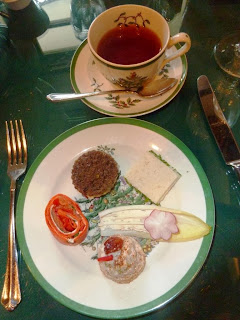 |
This is Little Miss Brainy,
credit Roger Hargreaves. |
When I was about 12 years old, my uncle came out to me as gay. We were out rollerblading, and I nodded, knowingly. He asked me if I knew what that meant. Being a Little Ms. Brain, I said yes. I'm sure he smiled, skeptically. Nevertheless, growing up "my gay uncle" wasn't a hypothetical. It was my--quiet, otherwise undiscussed--normal.
Once, early in grad school, I had a heated conversation with a student from another university. It was lunchtime during a conference, and somehow we found ourselves talking about queer issues and teaching. I think we were discussing Jack Halberstam's
In A Queer Time and Place: Transgender Bodies, Subcultural Lives, in which she argues that the primacy of lived, embodied experience is why we need more diversity in academia. I was insisting that despite being a heterosexual, married woman, I was open and welcoming of any of my future students who might identify as gay, lesbian, bisexual, etc. The other grad student--who outed herself in the course of the conversation (Me: "Okay.")--strongly denied that there was any way I could ever make my classroom "safe." Why not, I asked? I believed in the possibilities of a liberal arts education, meaning personal experience is not necessary to know something; rather, it is possible to learn things from books--even or especially if the author had a different embodied experience. We didn't resolve the issue of the classroom, but I tucked it away in the back of my brain.
I came out as a GLBT* ally sometime later in graduate school. I can't remember if it was because my immediate circumstances changed (I learned about queer theory, among other things) or if it was because national conversations about sexuality in politics and religion became that much more prominent. Most of my "activism" consisted of facebook posts and signing online petitions, but I also mentored a high schooler with an uncertain home situation and went to the local Pride Fest. As a medical student I attended a seminar on campus about queer issues in medicine and started wearing a rainbow flag button on my white jacket. (I wear a cross label pin, too, and figure patients will notice one or the other if they're looking for them.)
This past week I decided to "level up" by getting some formal training from the GLBT Resource Center on campus. Actually, this was the second time I had signed up for the ally training; the first time it had filled up super fast. The newly revamped training consisted of 3 hours jam-packed with definitions, testimonials, scenarios, and questions. One part of the training involved a panel of students who identify as gay. They told us their coming-out stories (two happy, one not) and shared some of their experiences on campus. When it was time for Q&A, my hand shot up: "As a classroom instructor, I already lay down ground rules at the beginning of the semester about appropriate language and things discussed in class not leaving the room. In your opinion, could I do anything else to make my classroom a safe space, or was that even a possibility?"
The general consensus was yes, this is possible. Instructors can design activities that are gender- and sexuality-neutral. To practice the future-probable tense in a foreign language class, for instance, students don't need to be broken up into boys and girls to discuss their ideal girl/boyfriend; let them talk about their ideal partner, job, house, or vacation instead. In addition, we should assign readings that include a variety of characters and family situations (i.e. two lesbian moms with kids).
And then there was what the one graduate-student panel member had described: in his first semester on campus, he felt uncomfortable submitting a paper to peer review that would likely out him to his classmates. The TA was very understanding, excused the student from class on those days, and did the review himself. Being open to my students' varying comfort levels--including the need to skip class sometimes--was held up as an example of how to make my classroom a safe space.
I didn't press the issue at the time, since there was so much more material to cover in the training, but upon later reflection, I realized that my original question had in fact been answered in the negative. The TA had removed the student from the situation precisely because he could
not ensure that a room filled with other persons who think, talk, and act independently would be a safe space. While I
should declare and police such boundaries, I have to realize that I lead the class, but I am not in control of the class.
This was a minor epiphany that my friends and family whose embodied "normals" include such uncertainties will probably laugh and roll their eyes at. Little Ms. Brain often thinks she knows what you mean, but she doesn't always, so she's trying to be a good ally by listening, reading, and watching all the time. After all, I still believe in the possibility of a classical liberal arts education, beginning with myself.
* GLBT = Gay Lesbian Bisexual Transgender. In college I remember a banner that was a veritable alphabet soup of an acronym: GLBTQQIA: Gay Lesbian Bisexual Transgender Queer Questioning Intersex Ally. There may also have been another A for Asexual. You can see why GLBT or "queer" is simpler to use; but please do not forget the diversity that hides behind those 4-5 letters.













































